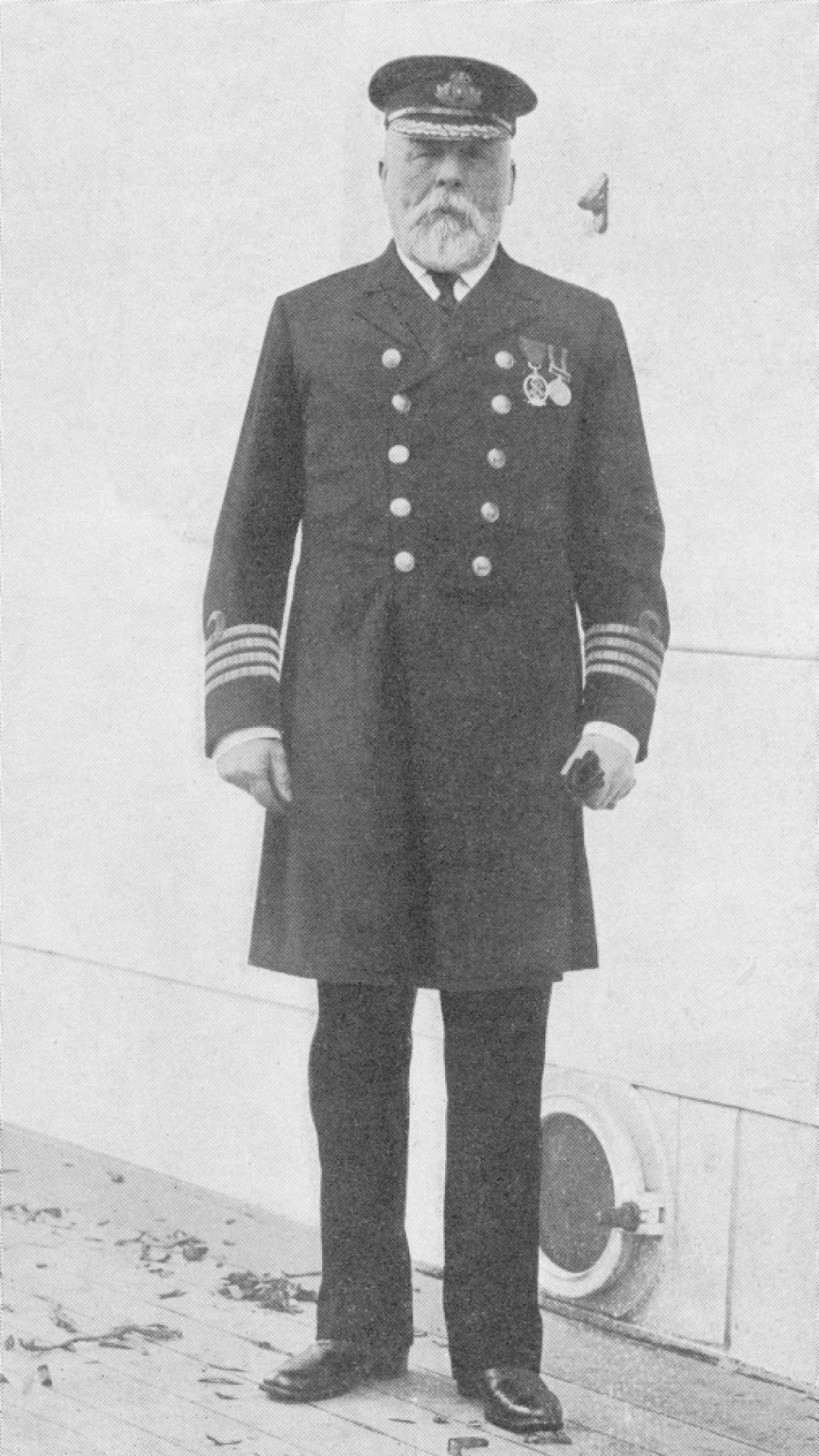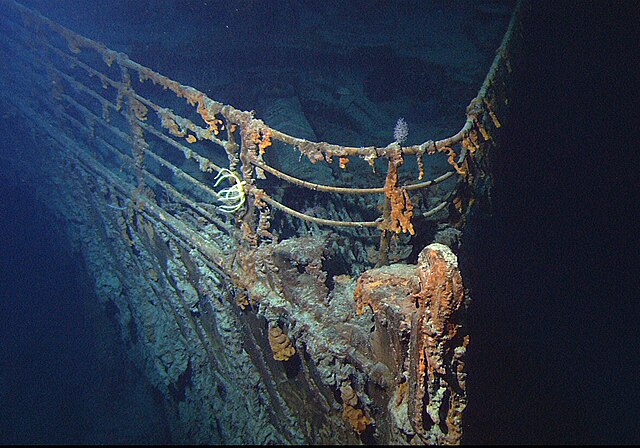Few maritime disasters have captured the public imagination like the RMS Titanic. Perhaps it’s because of the relatively recent nature of its sinking, compared to the loss of the Mary Rose warship.
The countless films, documentaries, and exhibitions probably help in prolonging fascination. New theories and reconstructions attempt to pin blame on one factor or another as the reason the ship sank.
But as we’re focused on folklore and legends here, what legends or ghost stories have become attached to RMS Titanic? Why are people convinced that ghosts still linger in the wreckage, or that a cursed mummy is to blame for the disaster? Let’s find out.
The Inevitable Background
Just on the extreme outside chance that anyone needs a refresher, let’s take an extremely brief look at its history. Built in Belfast by Harland and Wolff for the White Star Line, RMS Titanic set sail on her maiden voyage to New York on 10th April, 1912. She carried around 2,240 passengers and crew.
Incidentally, no one ever advertised RMS Titanic as unsinkable. That came from an exclamation in Shipbuilder magazine that the bulkheads design made the Olympic liners “practically unsinkable”. People also point to the Titanic’s relative lack of lifeboats, except herein lies another myth. Titanic actually carried more lifeboats than the British Board of Trade required them to have.
As Titanic left the dock at Southampton, she almost collided with the S.S. New York. Some considered this a bad omen for a ship’s maiden voyage.
Titanic struck an iceberg during its crossing late on 14 April 1912. We won’t go into the failings, as this lies beyond our scope. She sank in the early hours on 15 April 1912. Around 1500 lost their lives. Only 706 people survived.
The remains of the ship now rest on the sea floor, some 2.5 miles beneath the surface. No one located the wreck until 1985, some 400 miles east of Newfoundland.
The Cursed Mummy of the Princess of Amun-Ra
According to one legend, the mummy of the Princess of Amun-Ra was on board the Titanic when it set sail. It was so cursed, so said this story, that the Titanic’s fate was inevitable.
Four young Englishmen encountered a sarcophagus containing the Princess of Amun-Ra while in Luxor in the 1890s. Each of the four men met with some kind of misfortune after buying it, from banks going bust and taking with them one man’s entire savings, while another lost his job and could only earn a living selling matches.
After further accidents, it ended up in the British Museum, where cleaners and watchmen also met painful or tragic ends near the coffin. The managers eventually moved the Princess to the basement, before selling it to a private collector after more misfortune. Finally, an American archaeologist bought it and arranged for it to travel to New York with him in April 1912.

Trouble is, it’s not true.
The name is a major clue. The British Museum never had a mummy called the Princess of Amun-Ra – they only had a coffin lid from a Priestess of Amun, which is still in their collection. Amun-Ra is one of ancient Egypt’s best-recorded gods, as the supreme sun god and god of the universe. So the name ‘Princess of Amun-Ra’ actually makes little sense since Amun-Ra is not a place. Instead, the name slots into the Egyptomania that swept Europe in the 19th century.
Yep, that’s why Highgate Cemetery has an Egyptian Avenue, and we find sphinxes, pyramids, and obelisks in Victorian cemeteries.
The legend also sees one of the mummy’s owners consult Madame Blavatsky for her help in ‘exorcising’ the spirit. She replied it was evil, and could not be exorcised, so they were better off getting rid of it. Except the mummy didn’t end up in London until the late 1890s, and Madame Blavatsky died in 1891.
Where did the story come from?
The story actually came from William Stead and Douglas Murray, two Englishmen who created a story about an evil mummy. Stead was a journalist and editor, as well as a believer in spiritualism. It’s unclear why they concocted the story, but it became linked with the Titanic after Stead died in the disaster. He’d told the story at dinner, and a survivor recounted it to the New York World. Someone put together Stead’s story and his presence on the ship, and somehow deduced the cursed mummy in question was also on the ship.
I found one newspaper article from 1956 that reported the cursed mummy story as fact (Belfast News-Letter 1956: 4). That said, even in 1927, people understood the story was not quite a hoax, but also not a faithful explanation of what happened. An article in the Gloucester Citizen noted that Howard Carter dismissed tales of Egyptian curses as “childish inventions”, before resurrecting the ‘cursed mummy of the British Museum’ story. The writer noted that the story “must have tickled the trustees of the Museum”, before pointing out that the ‘cursed mummy’ was still in the museum (1927: 11).
Not everyone was so matter-of-fact. One news article in 1914 even claimed that the British Museum created an exact replica of the coffin lid. Once this was on display rather than the original, complaints stopped (Hull Daily Mail 1914: 3). In this version of the story, the Museum sold it to an American collector so he wouldn’t expose the one on display as a fake.
Experts combed through the cargo manifest in 1985 and found no evidence of a mummy. Yet the 1914 news article even attempts to explain away its absence from official paperwork in a manner befitting a true conspiracy theorist. They claimed that “[i]t was carefully packed so that no one could guess what its covering-case contained: and arrangements were made so that no hitch would be caused by Customs House examinations” (1914: 3). They don’t explain why such efforts would be necessary. But no excavations of the wreck site have ever revealed an Egyptian coffin or coffin lid, and considering the mundane items that have been retrieved and put on display, you’d certainly notice a sarcophagus.
The Ghost of Captain Smith
We’ve talked about crisis apparitions before, which is when a person sees an image of a loved one either at the point of their death or just before, while the loved one is far away.
One Titanic legend claimed Captain Edward Smith’s wife Sarah saw the captain as a ghost, well before she’d received word the ship had gone down (Stephens 2024).

It’s not the only time someone has seen Captain Smith. In 1977, Second Officer Leonard Bishop of the SS Winterhaven gave a tour of the vessel to a soft-spoken, British passenger. Bishop later reported the passenger as being unusual, but he couldn’t specify how. Eventually, Bishop came across a photo of Captain Smith, and Bishop exclaimed that this was the strange passenger he’d taken on the tour of his boat. He only learned from his companion that Captain Smith went down with the Titanic.
Captain Smith gets around a bit. He’s also been spotted at his childhood home in Stoke-on-Trent (Moye 2012). A retired mariner claimed to have seen Captain Smith at different sites in Baltimore over a seventeen-year period (Mrs Daffodil 2014). One family even thought he’d popped up in the background of a photo taken in a Belfast bar (Kraterou 2018).
I can’t help thinking it’s unlikely that he would appear in so many places. However, his distinctive look would make him far easier to recognise than anyone else among the crew, which perhaps explains why people see him—purely because he’s familiar. Though that does suggest people might be seeing ghosts of the rest of the crew, and just don’t realise they’re ghosts.
Underwater Ghosts
Ships passing the disaster site have reported seeing orbs of light above the water (Stephens 2024). When they have been spotted, they tend to appear in clusters.
Given orbs in ghost-hunting TV shows are often either light reflecting off insects or moisture in the air, which is why they’re often only detectable on camera, orbs at sea are far more intriguing—especially if they’re seen with the naked eye.

Submarines also report weird signals or radio interference if they’re near the disaster site. SOS messages with no source also crop up, which isn’t surprising since Titanic was an early adopter of the ‘SOS’ distress signal (Boroughs of the Dead 2024).
The Titanic Museum in Branson, MO is believed to be haunted. It displays more than 400 artefacts directly from the ship and its passengers. It seems people think the souls of the dead cling to their items even now. Yet the Titanic Museum in Belfast is not considered haunted, potentially since it’s intended as a tribute rather than displaying items from a gravesite.
What do we make of these myths about RMS Titanic?
Given the sheer number of disasters at sea since humans figured out how to make boats, you could imagine the sea as being teeming with ghosts. You’ve got drowned sailors and passengers, not to mention those lost during sea battles and accidents. With no proper burial, these spirits should in theory wander the world’s oceans like ectoplasmic flotsam and jetsam. Even when we don’t get underwater ghosts, we do get legends of ghost ships, like the Flying Dutchman.
Bearing this in mind, the idea of ghosts associated with Titanic’s wreckage is inevitable. Sightings on land are less easy to explain, though the relative celebrity of Titanic could inspire people to claim some kind of association with it.
Plenty of myths already surround the ship and its construction, with experts still at odds over exactly what happened on that fateful trip. Yet other myths, like the presence of a cursed mummy, persist, even when we know they’re untrue. Perhaps we’d rather believe in cursed objects as the cause of a disaster, rather than just being in the wrong place at the wrong time. A cursed explanation somehow feels less scary than good old-fashioned coincidence.
What do you make of these RMS Titanic legends?
References
Belfast News-Letter (1956), ‘Ghostly Tales of Ulster Interest’, Belfast News-Letter, 15 September, p. 4.
Boroughs of the Dead (2024), ‘Ghosts of the Sea’, Boroughs of the Dead, https://boroughsofthedead.com/ghosts-of-the-sea/. Accessed 16 December 2024.
Gloucester Citizen (1927), ‘Gossip of the Day’, Gloucester Citizen, 11 March, p. 11.
History.com (2024), ‘Titanic’, History.com, https://www.history.com/topics/early-20th-century-us/titanic. Accessed 16 December 2024.
Hull Daily Mail (1914), ‘The Evil Coffin-Lid’, Hull Daily Mail, 21 April, p. 3.
Kraterou, Aliki (2018), ‘Couple shocked after ‘ghost of Titanic’s captain photobombs them’ in Belfast pub’, Irish Mirror, https://www.irishmirror.ie/news/irish-news/couple-shocked-after-ghost-titanics-13445668. Accessed 16 December 2024.
Mikkelson, Barbara and David (1999), ‘Did a Cursed Mummy Sink with the Titanic?’, Snopes, https://www.snopes.com/fact-check/mummy-titantic/. Accessed 16 December 2024.
Moye, David (2012), ‘Titanic Captain Edward John Smith’s Ghost Haunts His Childhood Home’, Huffington Post, https://www.huffingtonpost.co.uk/entry/titanic-captain-ghost-haunt-house-neil-louise-bonner-england_n_1406928. Accessed 16 December 2024.
Mrs Daffodil (2014), ‘Captain Smith of the RMS Titanic Seen After His Death: 1912’, Mrs Daffodil Digresses, https://mrsdaffodildigresses.wordpress.com/2014/04/12/captain-smith-of-the-rms-titanic-seen-after-his-death-1912/. Accessed 16 December 2024.
Stephens, Hollie (2024), ‘The Legends Behind 6 Haunted Shipwrecks’, Mental Floss, https://www.mentalfloss.com/haunted-shipwrecks. Accessed 16 December 2024.
Nutty about folklore and want more?
Add your email below and get these posts in your inbox every week.
You'll also get my 5-step guide to protecting your home using folklore!








Interesting article! It’s always really cool to see people discern where legends originated from
Sometimes the original truth is even better than the legend!